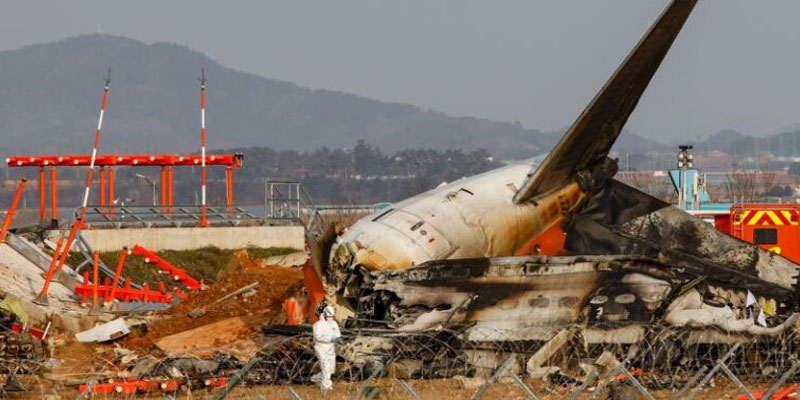Saudia Airlines Flight Faces Landing Gear Issue
A near-tragic accident was narrowly avoided early Sunday morning when a Saudia Airlines flight (SV 3112) carrying 250 Hajj pilgrims encountered a landing gear malfunction upon arrival at Lucknow Airport. The flight, which departed Jeddah at 10:45 PM, touched down around 6:30 AM, sparking immediate panic as smoke and sparks erupted from the undercarriage during taxiing.
Thanks to quick reflexes by the pilot and swift action by the airport fire and rescue teams, the situation was brought under control within 20 minutes, averting any casualties. No injuries were reported.
Preliminary Investigation Points to Hydraulic Leak
Initial findings suggest a hydraulic system leak may have led to the glitch. While no structural failure occurred during descent, experts warn that had the issue manifested during take-off, the results could have been catastrophic.
The incident casts a troubling shadow, as it occurred just days after the deadly crash of Air India flight AI 171, which claimed 241 lives and left only one survivor. Though unrelated, the timing of both incidents has reignited scrutiny over aircraft maintenance standards, emergency preparedness, and safety protocols—especially during peak Hajj travel season.
Lufthansa Dreamliner Turns Back Mid-Air After Bomb Threat
Only hours after the Saudia Airlines scare, another aviation alarm came to light: Lufthansa flight LH752, a Boeing 787-9 Dreamliner en route from Frankfurt to Hyderabad, was forced to make a mid-air U-turn after a suspected bomb threat emerged over Bulgarian airspace.
The aircraft, which had taken off at 2:14 PM (local time), reversed course approximately two hours into the flight and safely returned to Frankfurt by 5:30 PM. Hyderabad’s Rajiv Gandhi International Airport (RGIA) officials later confirmed that landing clearance was denied due to flagged security concerns.
Silent Alert, Standard Protocol
Passengers onboard were notified of the diversion without any explicit mention of a bomb scare. According to one traveler, they were told about the reversal but not the reason. Lufthansa offered overnight accommodation and rescheduled the flight for Monday morning at 10 AM, pending a thorough security sweep.
Although German airport authorities confirmed the flight’s return, they refrained from discussing the threat, directing all queries to federal police and the airline. Meanwhile, aviation security experts say standard bomb threat protocols were triggered: cockpit lockdown, rerouting, and communication with air traffic authorities.
Growing Risk Indicators in Global Aviation
These two high-risk incidents in less than 24 hours underline multiple cracks in aviation safety:
· Aging Aircraft and Technical Wear: The Saudia incident indicates that even routine flights can become critical if aircraft systems aren’t rigorously checked—especially with rising passenger volumes during seasonal peaks like Hajj.
· Security Vulnerabilities Mid-Air: Lufthansa’s bomb scare illustrates that while modern aviation security has improved, threat detection and response remain vulnerable at high altitudes.
· Reactive vs Proactive Protocols: Both incidents show that aviation protocols are effective in emergency management, but still largely reactive, highlighting the need for prevention over damage control.
· Passenger Communication Gaps: Transparency remains limited during crises, often to avoid panic. However, this raises ethical and safety concerns about how much passengers have the right to know.
The Way Forward: From Patchwork Fixes to Holistic Reform
To restore public confidence and ensure safety, a comprehensive review of aviation safety mechanisms is essential:
· Mandatory Pre-Landing Diagnostic Checks: Especially for flights during peak seasons or long-haul routes, preventive system diagnostics should be enforced before descent.
· Unified International Emergency Protocols: While standard operating procedures exist, coordination between departure and arrival nations during emergencies—like Lufthansa’s case—needs strengthening.
· Technological Overhaul: Airlines must invest in next-gen maintenance tech, predictive analytics, and AI-driven diagnostic systems to catch faults before takeoff or mid-flight.
· Transparent Crisis Communication: While minimizing panic is key, a balance must be struck between security discretion and passenger rights to information.
· Enhanced Training & Simulation: Regular emergency response drills for pilots, crew, and ground staff can reduce response times and improve outcomes, as seen in both these incidents.
A Call to Action, Not Complacency
The incidents involving Saudia Airlines and Lufthansa may have ended without loss of life, but they are stark reminders of how quickly routine can turn to risk. From technical integrity to security coordination, the global aviation industry must move from reactive safety to proactive resilience. In an era where air travel is both common and critical, flights must guarantee not just speed—but safety, certainty, and trust.
(With agency inputs)


















